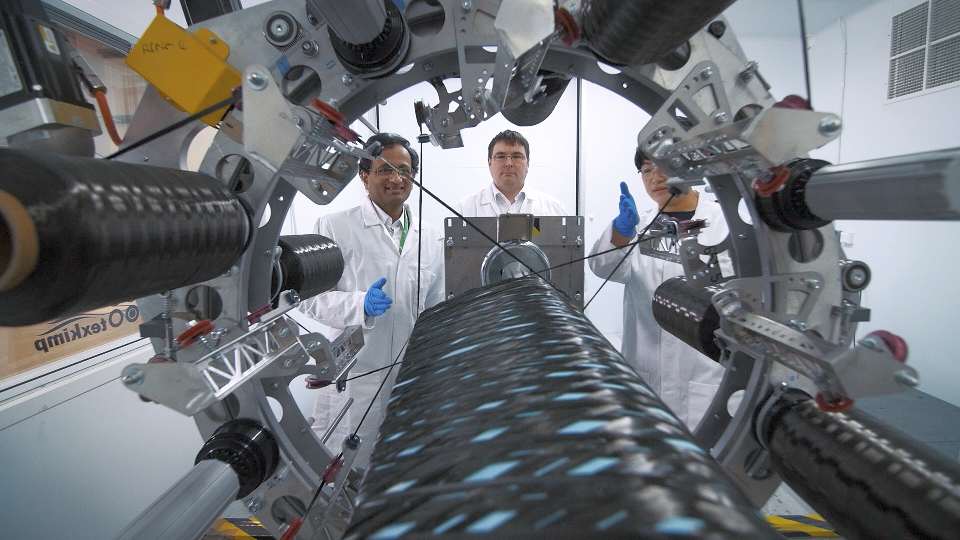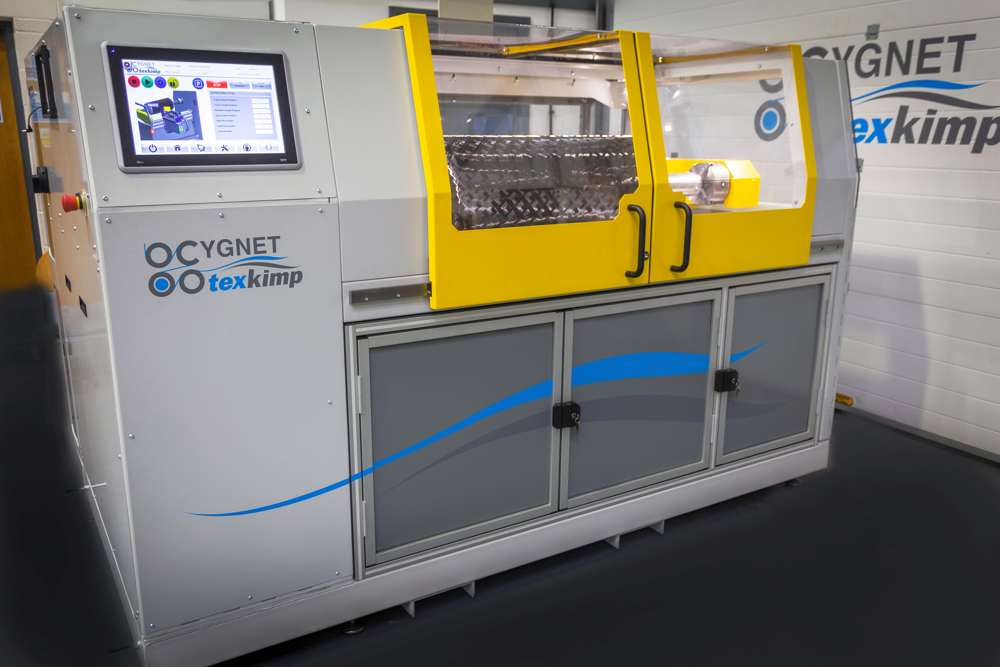It’s all about the fibre

Luke Vardy, managing director of Cheshire-based custom machinery builder and composites converting specialist, Cygnet Texkimp discusses the tailored solutions the company can offer the composites industry.
First developed in the late 1940s, filament winding is one of the oldest composite manufacturing processes and has traditionally been used to create lightweight, high-performance structures including pressure vessels, pipes, and masts for sailing yachts and telecoms.
In recent years, interest in the process and what it can achieve has increased as the market tries to get more from it in terms of speed, cost-efficiency, scale and complexity. Filament winding has much to offer, but if it is to be adopted as a viable method of manufacture, particularly in the high-volume automotive industry, then it needs to be faster and more precise.
Conventional filament winding is a method of winding fibres under tension around a rotating mandrel to build up a shape. Fibres can be impregnated with resin as part of the process and immediately before being placed on to the mandrel, but increasingly machines are being developed to wind prepreg tapes, towpreg or dry fibre. Combining the process with robotics has also made it more flexible in terms of the size and shape of the structure that can be manufactured, including small aircraft wing spars and fuselages, car wheels, crash bars and wind turbines.

The mandrel itself is an important consideration. It can be left in place and, in the case of automotive applications, used to help with impact resistance or, more traditionally, extracted, as in the manufacture of masts.
Three years ago, we launched a large-scale R&D venture in partnership with the University of Manchester to develop a series of technologies that push the boundaries of what can be achieved with filament winding using robotics and automation to yield higher rates of production, tension and precision.
Bobbin and weaving
The first technology to emerge from our work was our 3D Winder: a robotic winding machine based on the 9-axis robotic winding concept first developed by Professor Prasad Potluri and designed to produce complex parts that vary in cross-section and shape. This high-speed, multi-head machine combines rotation and fibre feed in one mechanism that is robotically moved around a static mandrel, winding as it goes. Multiple heads or positions, each carrying a single package of fibre, are mounted onto a rotating ring. The size of the ring and the number of heads it incorporates are scalable and dependent on the size of the part being manufactured. Our lab machine can accommodate up to 16 bobbins, which means it can wind a wide range of parts from aerospace fuel lines to crash beams for automotive, down to hydrogen fuel cells and pipes for oil and gas, and up to a wind turbine blade or aircraft fuselage. By mounting multiple fibre feeds we can also speed up what has typically been a relatively slow process. The machine is capable of winding carbon fibre at a rate of 1kg/min, which means it can wind an aircraft spar in just a few minutes.
A key feature of the 3D Winder is its ability to create more complex and curved shapes with higher precision. Inspiration for its development came from an F-35 fighter jet inlet duct, which is a complex, curved part measuring around 3m in length and shaped with a large, round cross section at one end that transitions to a smaller, square shape at the other. The 3D Winder can match this complexity because of the degree of freedom that the travelling winding mechanism can offer over a stationary winder.
We originally thought the 3D Winder would be more akin to a braiding machine, because its large-scale ring loaded with rotating packages of fibre is reminiscent of braiding technology. But we discovered we could produce a non-crimp material that is stronger and contains less shear than a braided material.
The work we undertook to develop the 3D Winder was so wide-ranging that it left us with a body of knowledge that has subsequently enabled us to develop two further filament winding machines which are less complex but equally useful to the market.
The first is a robotic filament winding machine which retains the conventional filament winding set up in which the mandrel rotates, but is held in a fixed position while the fibre feed unit is positioned on a robotic arm to enable the fibre to be fed in from multiple axes of motion. Both can incorporate a driven creel mounted onto the robot which allows each position or axis to be tensioned individually to control fibre feed and deliver a high level of accuracy and consistency in the finished part. This also means the speed of each feed can be varied to deliver higher resolution to create smaller-scale features or complex geometries.

The second technology, launched at JEC World, is a 4-axis winding machine. This machine is accessible to a wider cross-section of the market but retains the specialist features that our technology is known for, including optimised geometry, reduced contact points, and the right surface finishes.
Minding the winding
The focus of our development work is to now combine our filament winding machinery with other machines from our portfolio to once more stretch what this technology can do. We’re incorporating fibre unwinding creels, automatic loading and unloading, resin mixing, data logging and visual quality inspection technologies to eliminate opportunities for fibre damage and to enable full factory traceability to Industry 4.0 standards.
We’re already producing high-speed prepreg manufacturing and slitting technologies, and now we’re able to combine these with our filament winding technologies. We’ve also begun customer trials of filament winding technology with thermoplastic tapes produced on the full-scale thermoplastic lab line that we operate in our R&D centre. This will enable our customers to manufacture complex parts that perform at high temperatures, which makes them ideal in aerospace applications.
Our long-term investment in R&D is proving to be a strong point of differentiation that enables us to compete effectively in the global market. Being able to invite customers to trial our machinery at our state-of-the-art showroom and development centre enables us to build the sort of trusting and sustainable partnerships that fuel this level of intensive product development.








